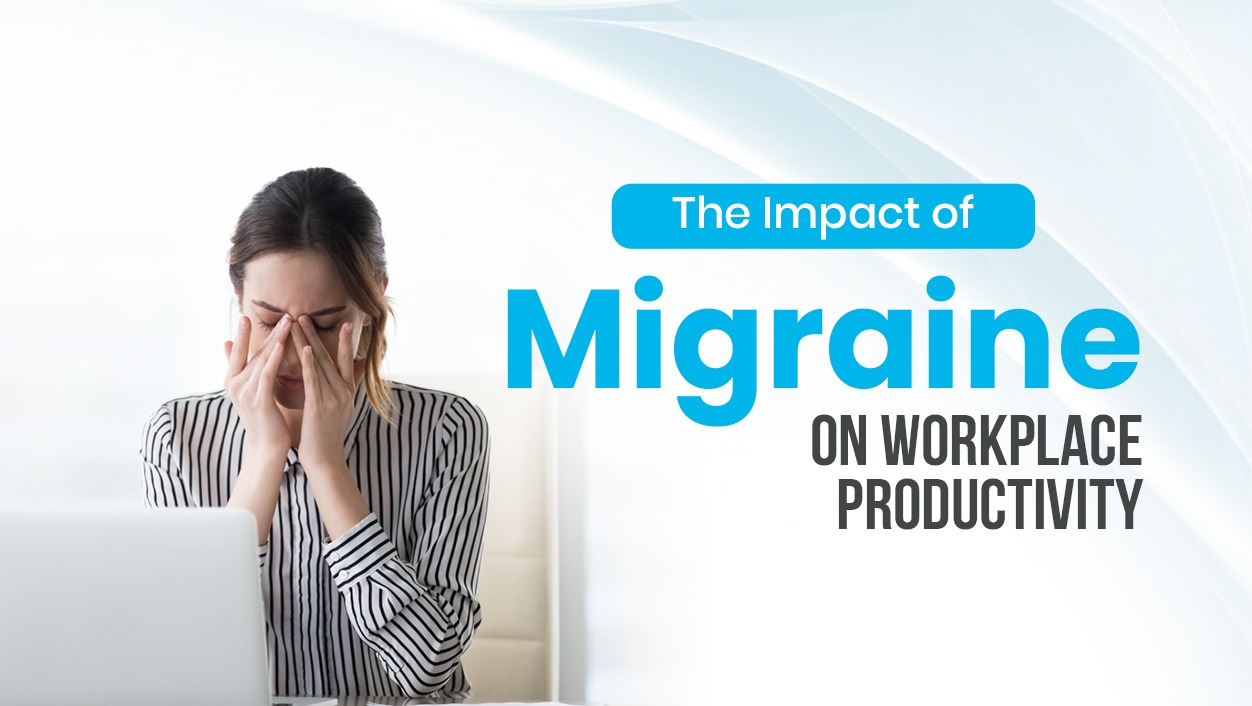Why Do Migraines Feel Worse at Work?
No matter what kind of job you do—whether you’re standing all day in a busy store, operating heavy machinery, sitting through back-to-back meetings or driving long routes—work takes a toll on your body and mind.
Stress, noise, bright lights, skipped meals, irregular sleep—these things add up. Most of us brush off headaches or dizziness as part of the daily grind, something a cup of coffee or a quick break might fix. But when these symptoms become frequent, intense and start affecting your ability to focus or function, it’s time to ask: Is work triggering something more serious?
For many, migraines at work aren’t just uncomfortable—they can derail an entire day.
What is a Migraine?
Migraines are not just bad headaches. They are a neurological condition that can last for hours or even days. Migraines are more common in females compared to males. The pain is often throbbing, usually on one side of the head and can be accompanied by nausea, dizziness and sensitivity to light and sound. Some people even experience warning signs before a migraine hits—like mood changes, food cravings or flashing lights in their vision.
Unlike a tension headache, migraines can make it impossible to concentrate, think clearly or even function normally.
Why Work Can Make Migraines Worse
If you’ve ever had a migraine at work, you know how hard it is to push through. But what makes workplaces such a common trigger?
- Stress overload: Deadlines, meetings, demanding customers, constant pressure—it’s a perfect storm for migraines.
- Screen time strain: Staring at bright screens for hours strains the eyes and can make headaches worse.
- Noise and lights: Harsh office lighting, loud environments and sudden sounds can set off a migraine.
- Skipping meals and dehydration: Working through lunch or forgetting to drink enough water? That’s a fast track to a migraine.
- Irregular sleep: Shift work, long hours or inconsistent sleep schedules throw off your body’s rhythm, increasing the risk of an attack.
For many people, these triggers stack up, making migraines more frequent and harder to manage.
The Real Cost: More Than Just Sick Days
Migraines affect more than simply pain; they can take over your work life. The 2019 Global Burden of Disease (GBD) study identified headache disorders as the third leading cause of disability worldwide, following back pain and depression. Among them, migraines ranked as the number one cause of disability for adults under 50. When one hits, even simple chores seem impossible. Frequent episodes make it difficult to concentrate, think clearly and keep up with everyday tasks. Over time, this doesn’t just impact productivity—it can hold people back in their careers, cause stress and even force them to change jobs.
Most people assume the biggest challenge is employees taking too many sick days. But the real issue? Presenteeism—when someone shows up to work with a migraine but struggles to function.
Research shows that 89% of migraine-related workplace costs come from presenteeism, not absenteeism. That means businesses aren’t losing billions because people are staying home—they’re losing money because employees are at work, exhausted, in pain and unable to perform at their best.
Trying to push through a migraine means:
- Struggling to focus or process information
- Making more mistakes due to brain fog
- Avoiding meetings or team interactions
- Feeling drained, irritable or overwhelmed
It’s frustrating—not just for the person with the migraine, but for their team as well. And yet, so many people keep quiet about their migraines because they don’t want to seem unreliable or weak.
Why So Many People Suffer in Silence
Even though migraines are common, they’re still misunderstood—especially in the workplace.
- Many people never seek medical help, thinking it’s “just headaches” they need to manage on their own.
- Employees fear they’ll be seen as making excuses if they mention migraines.
- There’s still a stigma around chronic conditions that aren’t immediately visible. People fear being labeled “unreliable” or “difficult.
This leads to stress, isolation and even career changes for those struggling with frequent migraines.
How Workplaces Can Help
The good news? Small changes can make a huge difference.
- Educate managers and teams – Help them understand that migraines are a real medical condition, not just a bad headache.
- Allow flexibility – Remote work, flexible hours and the option to take short breaks can help employees manage symptoms.
- Create migraine-friendly spaces – A quiet, dimly lit area for breaks can help someone recover from a migraine without needing to leave work.
- Support access to healthcare – Encouraging medical support, providing wellness programs, or offering health benefits that include migraine management can go a long way.
When businesses acknowledge migraines as a real workplace issue, they not only support their employees they also create a healthier, more productive work environment.
Final Thoughts
Migraines aren’t just a personal struggle; they’re a workplace issue. Ignoring them leads to lost productivity, burnout and unhappy employees. But with the right support, workplaces can make a real difference in helping employees manage their health while staying engaged at work.
If you deal with migraines at work, what changes would help you the most? Let’s start the conversation.









